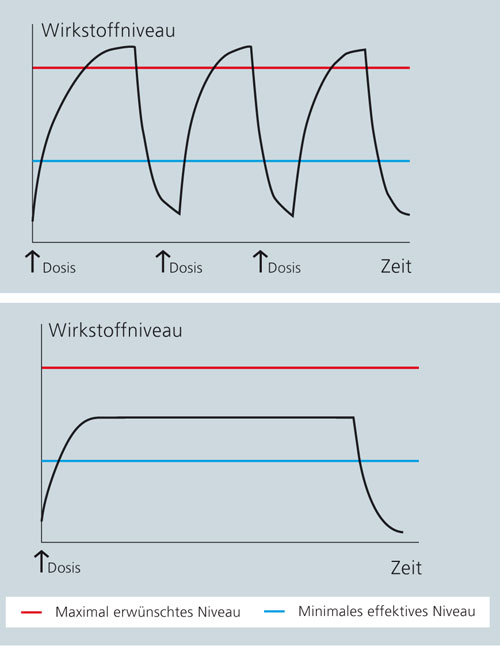As carriers, polymer nanoparticles control the release of effect substances or active ingredients (controlled release). Biodegradable compounds, which are decomposed after their application in the body or in the environment, are becoming increasingly important here. The functional groups of which biodegradable polymers are composed determine the physical and chemical properties such as the rate of release and degradation. The combination of nanoparticles with drug-relevant proteins makes it possible to pursue new drug concepts experimentally. In addition to the possibility of protecting sensitive drugs against biodegradation, nano- and microparticulate carrier systems can also mediate targeted drug release.
Encapsulation
Encapsulation of active ingredients

Dosing of active ingredients in the traditional way (above) and in a controlled way (right) with drug delivery systems.
The release kinetics of the active substances from nano- or microparticles is adapted to the respective problem. The various parameters that influence the kinetics are adjusted according to the customer's requirements. In addition, Fraunhofer IGB also generates tailor-made polymers. In particular, the molecular weight and the ratio of hydrophilic and hydrophobic monomer units influence the release kinetics.
 Fraunhofer Institute for Interfacial Engineering and Biotechnology IGB
Fraunhofer Institute for Interfacial Engineering and Biotechnology IGB